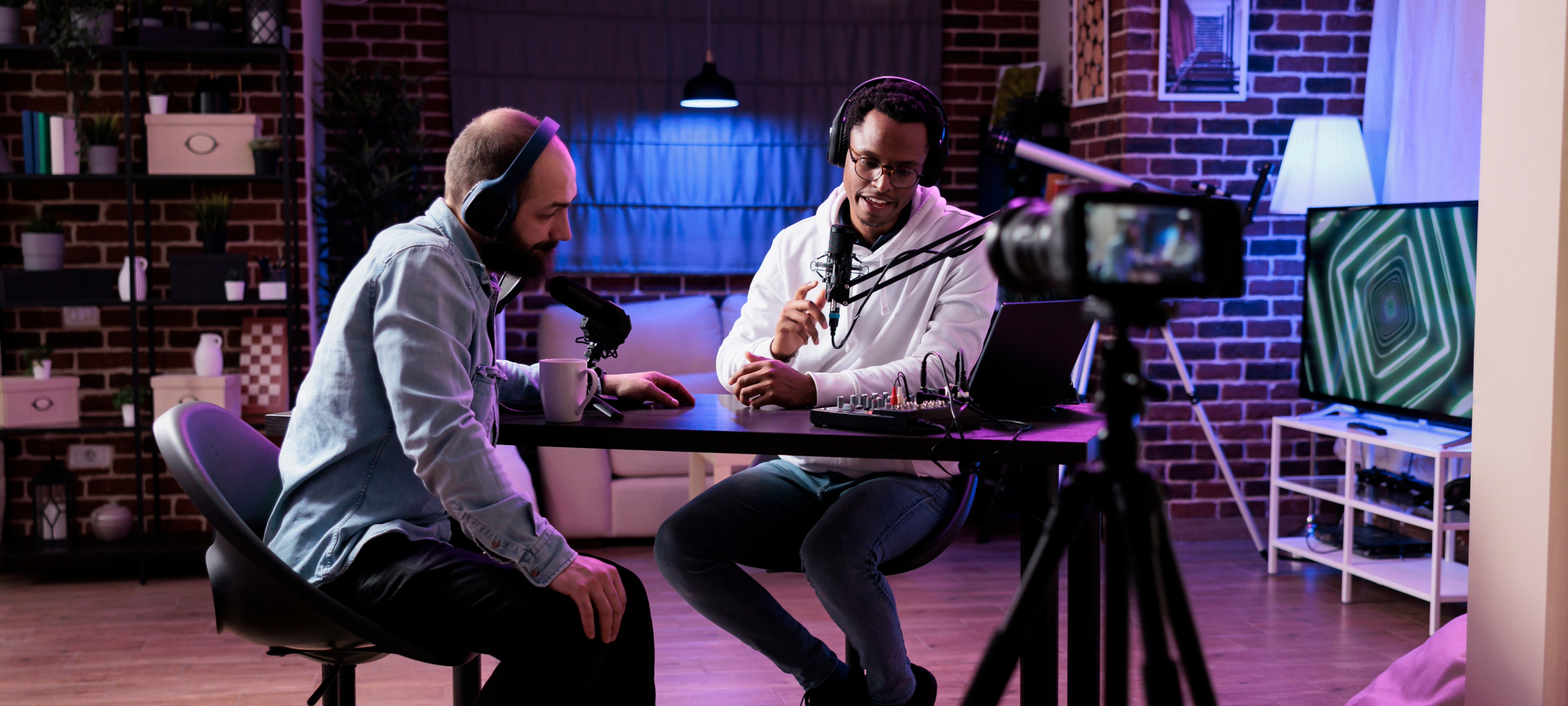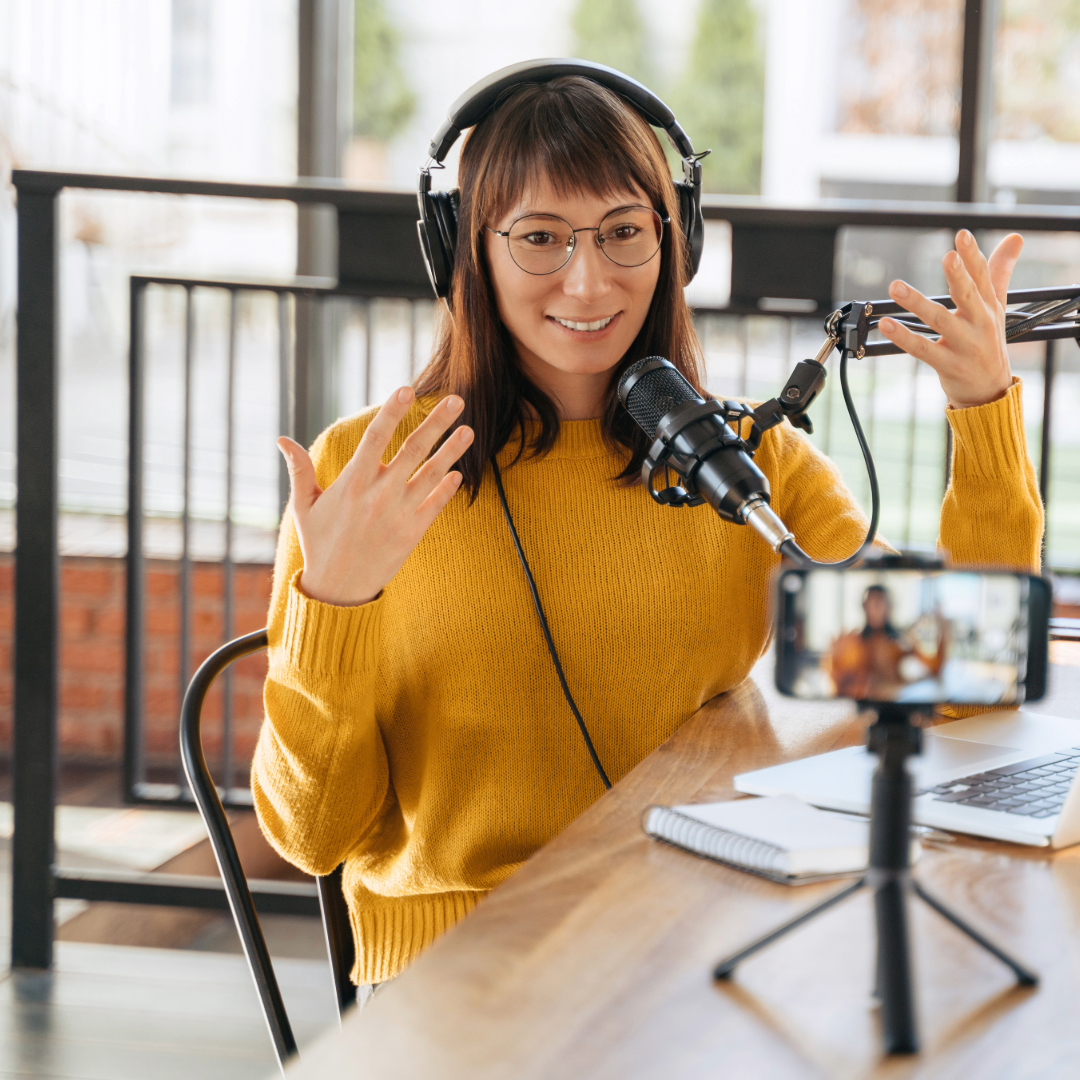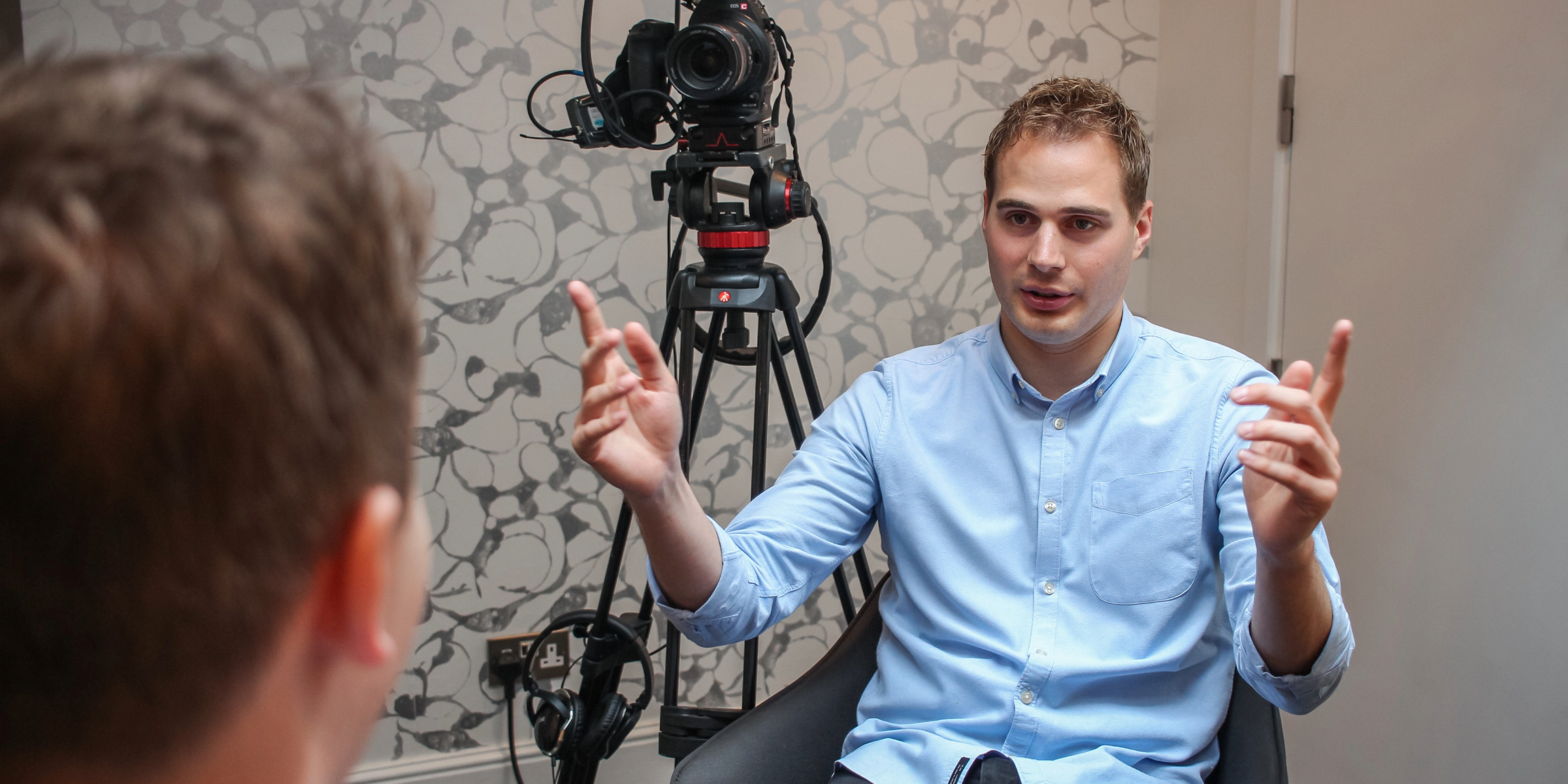A video podcast, sometimes also known as vodcast – is simply a podcast which has been filmed.
Over the years the growth of video content across online and social media including YouTube, coupled with vast improvements in internet speed has made video more popular. As a result, podcasters are now embracing video podcasts to attract larger audiences and make episodes more engaging.
The lines are a bit blurred between what counts as a video podcast and what is just video content. However, video podcasts are still typically made available as audio, allowing more flexibility for those who are on the move or not able to watch easily on a device
This blog is a helpful guide on video podcasts for businesses and brands.Whether you’re thinking about commissioning a video podcast, or making the move from audio to video find out more about this burgeoning sector.
The benefits of producing video podcasts with a business focus
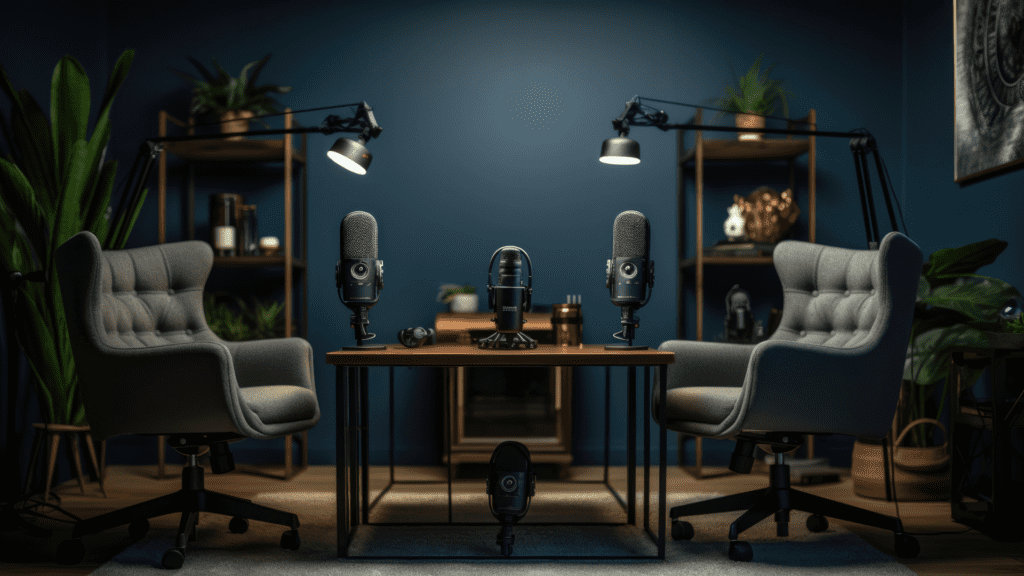
Video podcasting has been on the rise for years. However, recently, video podcasts have become more significant than ever.
In the first quarter of 2024, according to Spotify – Globally there was a 39% increase in average daily steaming of video podcasts
TikTok now has more than 1.5 billion active monthly users and video podcasters are increasingly sharing clips on the channel.
The benefits of producing video podcasts with a business focus
According to online video recording company Riverside, 85.4% of companies are already recording video for their podcasts and it is a trend we’re noticing too. There are some obvious advantages to video podcasts:
- Video is so much more engaging than audio and gives richer content. It allows, for example, a c-suite executive to show some personality and become the host or find some untapped talent from the marketing team who has a natural aptitude. It’s all about engaging with your audience and helping you reach a new audience. You need to dovetail your presenter and content to your audience and mirror them with your presenter.
- Seeing as well as hearing the podcast allows potential customers and clients to form a closer bond with the brand and that drives higher engagement.
- Google tends to give priority to YouTube videos ( they own them).This gives YouTube video podcasts a big advantage over audio-only podcasts in getting new subscribers. So our advice is if you optimise your YouTube videos with search terms people are searching for on Google. Your YouTube podcast will rank higher and be more accessible, adding SEO value.
- Video podcasts can also give you more opportunities to monetise with monetisation options like ad revenue or super chat.
- Advertisers are investing more in podcasts. More than two-thirds of U.S.-based marketers say they see a return on investment of between $2 to $6 for every dollar spent on podcast ads. That’s a high ROI compared to other mediums, and it will keep advertisers coming back for more.
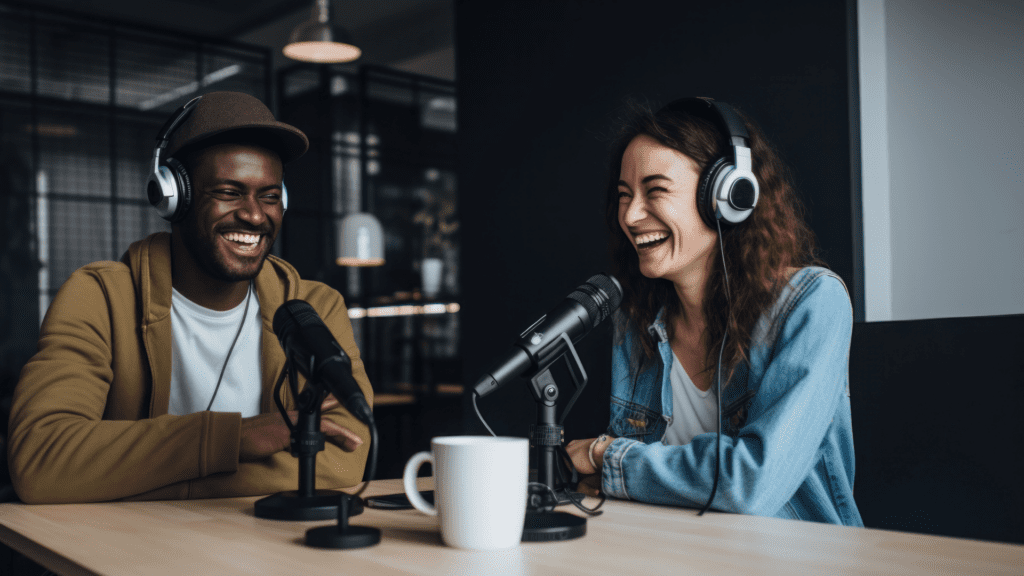
The different video podcast formats:
Audio podcast with pictures
This first suggestion may be of interest if budgets really are constrained. Some may view it as a bit of a cheat, but you can record your podcast upload it to a basic editing software programme and add an image or series of images over the top. Export it as a video file and you have a video podcast. You can always add images of your host and guests to make it more engaging
On-location video podcast
This is when the production team bring their audio and video kit to you and create a pop-up studio. This is a cost-effective way of producing a podcast, particularly if you have a great visual space at your offices or business premises. This will inevitably take longer than a simple static image podcast, with more production including editing required.
In-Studio Video Podcast.
We’d call it the works! If budget allows, we’d recommend going into a studio and this type of podcast is becoming more common place. Its visually interesting, with multiple camera angles and amazing sound with quality mics. This type of professional video podcast is proving popular with audiences, helping them to connect with the host and guests as if they were in the studio with them. You can control lighting and sound better and typically they provide autocue to ease the life of the host.
The stages of creating a video podcast, from planning to publication and promotion
Ultimately it comes down to available budget and really it is ‘how long is a piece of string’. Typically, the primary focus of a business podcasts is to:
- Build brand awareness among the company’s customer base
- Promote your company culture
- Demonstrate to clients and potential customers that you’re an authority in the field
- Showcase your credentials
Our recommendation to clients is initially produce x 6 podcasts and if it is your first foray into producing a business podcast, we’d suggest a modest 20-30 minute maximum length.
Within those podcasts think about the key messages that would need to be worked in.
Ask your audience for feedback after 2-3 podcasts. This way, you can see where the audience is at and tailor your future podcasts accordingly.
There’s so much to think about but these are questions to ask yourself when creating a video podcast
- What will be the ideal format of the podcast to convey your key messages?
- What is the overall goal of the video podcast? What topics do you plan to cover?
- What kind of guests do I plan to bring on to the show? Will they only include people from within the company? Or will guests from outside be included?
- What will the tone of the podcast be? Will it include humour and creativity? Or will it be purely informative?
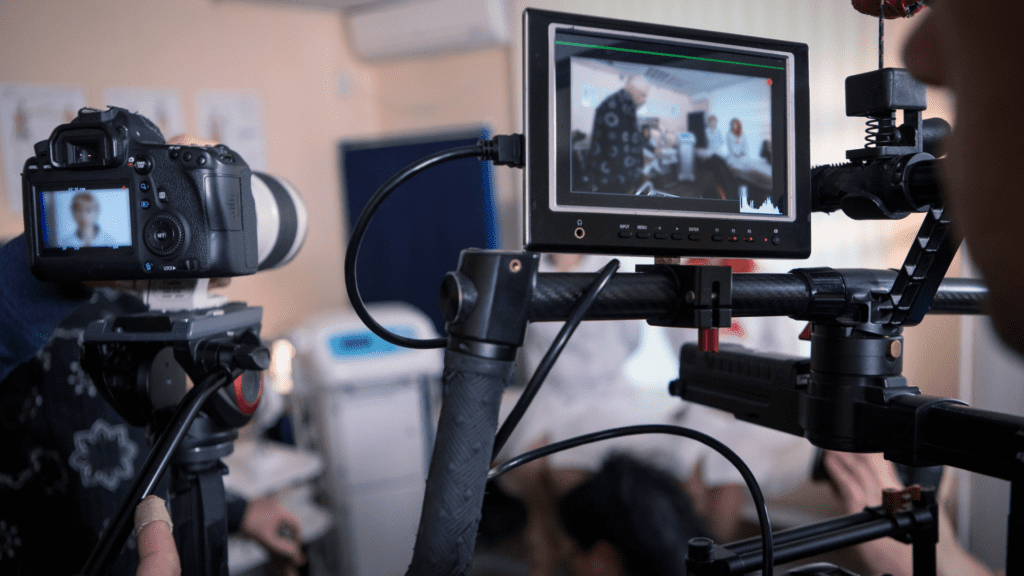
Here are the key steps we recommend that you follow when commissioning a corporate video podcast
1. Figure out the type of video podcast you want to publish
You can choose from the following types:
- Interview podcasts
- Solo podcasts
- Co-hosted podcast
2. Next, plan your episode
As a business you will have a wealth of potential topics. For example, if you’re a cleaning business you could look at green washing and the impact on the environment, or almost 5 years on the impact of Covid.
Establish a schedule for releasing the episodes – this is your choice but typically it is every couple of weeks or monthly. Come up with an outline for the episode.
Below is a very simple template to follow which is a great starting point
> Intro: Something interesting to hook your audience.
> First segment.
> Segue (music or ads)
> Second segment.
> Segue (music or ads)
> Episode summary.
> Call to action: Encourage your audience to rate, review, and subscribe.
> Cliffhanger: Motivate your audience to listen to the next episode.
Here are the key steps we recommend that you follow when commissioning a corporate video podcast
Create a script for the episode
Produce the episode. For a video podcast you will need a producer to support you throughout the process.
Finding guests
You don’t need guests if you’re going the solo podcast route. That being said, most successful podcasts usually have a guest or guests on the show.
The best guests to invite to a corporate podcast include industry leaders, experts in your company, and business partners.
Once your podcast is recorded, boost its reach through social media marketing. We use ‘Magic Clips’ which helps you extract the most share-worthy snippets from your podcast and promote it to Instagram, YouTube, LinkedIn, or Facebook.
Equipment-wise, here is a quick checklist really the basics to get you started
– Camera and video recording software
– Microphone
– Headphones
– Decent lighting – but at a minimum some lamps
– Quiet and visually appealing room
– Green screen if necessary
Using video podcasts for PR and promoting a video podcast
We’re finding that an increasing number of our clients are wanting to be guests on business video podcasts. For example, Diary of A CEO with Steven Bartlett with and securing a spot-on relevant podcasts allows PR professionals to position their clients as thought leaders in their respective fields. This exposure broadens their reach and establishes credibility with a targeted audience.
Our recommendation is to prepare at least three episodes of your video podcast for launch. This will give journalists a flavour of what to expect.
A good tip is to provide clips from what you’ve posted (easy to do on YouTube) to allow the PR team to release on social media – this can only be beneficial.
Include a watermark of your logo on your videos and make sure you require any guest to credit you on whatever platform they share the clips on– a back link will help with SEO too.
Good old-fashioned word of mouth really works – encourage reviews from your viewers.
Finally, if you’re producing great content for your business video podcast, be sure to promote it on your own socials.
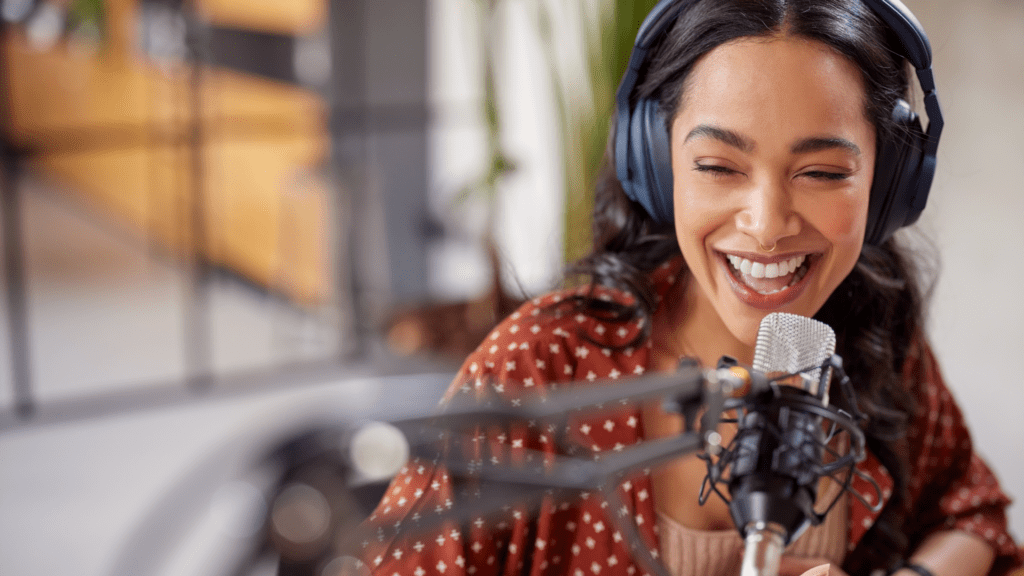
Summing up
Let Shout! Communications support you with your next business video podcast series. Our team is here to guide you through every step of the process. We specialise in helping brands identify, train, and prepare the perfect podcast host, along with producing content. We’ll help to bring your video podcast campaign to life.
For more information on Video or Audio Video podcast production at Shout! Communications contact hello@shoutcommunications.co.uk
Outcome
Succinct soundbites along with cinematic, scene-setting montages of the event and location make for some beautiful videos. Founders Forum used the videos to promote future events and create brand awareness.
